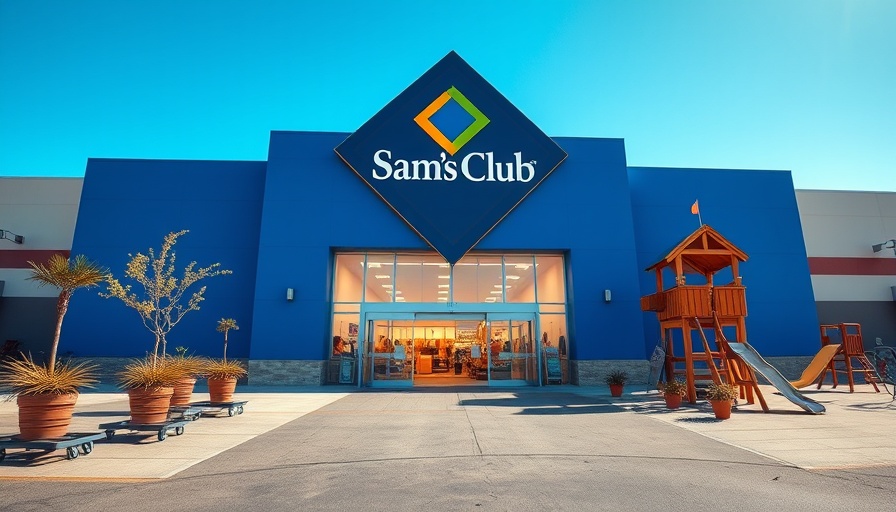
Unlock Savings: The Benefits of a Sam's Club Membership for Business Owners
For any business owner, managing costs effectively is crucial to sustaining and growing an enterprise. The current promotion from Sam's Club provides an excellent opportunity to leverage membership benefits that could significantly ease your financial burden. At just $50 for a year, coupled with $35 in Sam's Cash, new members can optimize budgets while shopping for essentials ranging from office supplies to tech gear.
Understanding the Value Proposition
A Sam's Club membership offers more than just bulk buying power. It’s about making strategic purchasing decisions that yield long-term savings. With a curated inventory that emphasizes quality and value, Sam's Club ensures you aren't just saving money but also investing in reliable products that enhance your business operations. This unique model stands in contrast to typical retailers, where the volume of choices can often lead to indecision and subpar purchases.
Streamlined Grocery and Supply Acquisition
The convenience of bulk buying cannot be overstated, especially in today's economy where essentials like snacks and office suppliescan add up quickly. Sam's Club's one-stop shopping experience means that business owners can stock up on necessary items efficiently, keeping operations running smoothly without the chaos of frequent shopping trips. The mobile app and Scan & Go checkout further simplify the process, saving time that can be redirected back into the business.
Exclusive Offers Beyond Grocery Needs
Beyond essential supplies, Sam's Club membership opens doors to exclusive travel discounts, entertainment deals, and more. In a time when many business owners are seeking to stretch their budgets, the potential for savings on travel expenses for client meetings or conferences presents a compelling advantage. These additional benefits underscore the true value of membership, making it a multifaceted investment into your business.
Future Trends: More Than Just a Membership
The landscape of retail is evolving, and members of Sam's Club are at the forefront of this shift. As big-box retailers adapt to changing consumer demands, those who seize opportunities like these can secure a competitive advantage. The cost-effective buying patterns afforded by a membership not only promote better budgeting now but lay the groundwork for healthier financial practices in the long run.
Common Misconceptions
Many potential customers may hesitate, viewing membership fees as another added expense, but it's essential to recontextualize this thinking. When viewed against the backdrop of bulk purchasing capabilities and additional rewards, the initial outlay diminishes in significance. It's not merely about spending $50; it's about the cumulative value derived from deliberate purchases that yield substantial savings and the necessary tools for business growth.
Embracing Innovation in Shopping
As we navigate an increasingly digital world, smart shoppers are adapting by leveraging technology. With Sam's Club's mobile app, the shopping experience becomes not just efficient but also innovative. Technology isn't just a convenience; it's a tool that enables business owners to respond quickly to inventory needs and opportunities.
Steps to Get Started
Ready to take the plunge? Here’s how you can benefit from a Sam's Club membership: Sign up online, use the code provided upon registration, and enjoy the promotional benefits for a full year. Don't forget that this deal is specifically targeted at new U.S. members, making it a limited-time offer that encourages immediate action.
In a competitive business environment, every dollar counts. Taking advantage of the reduced membership cost and immediate rewards can make a significant difference in your operational budget. Explore the strategic advantages that Sam's Club offers and propelled your business toward a future of enhanced savings.
 Add Row
Add Row  Add
Add 



Write A Comment